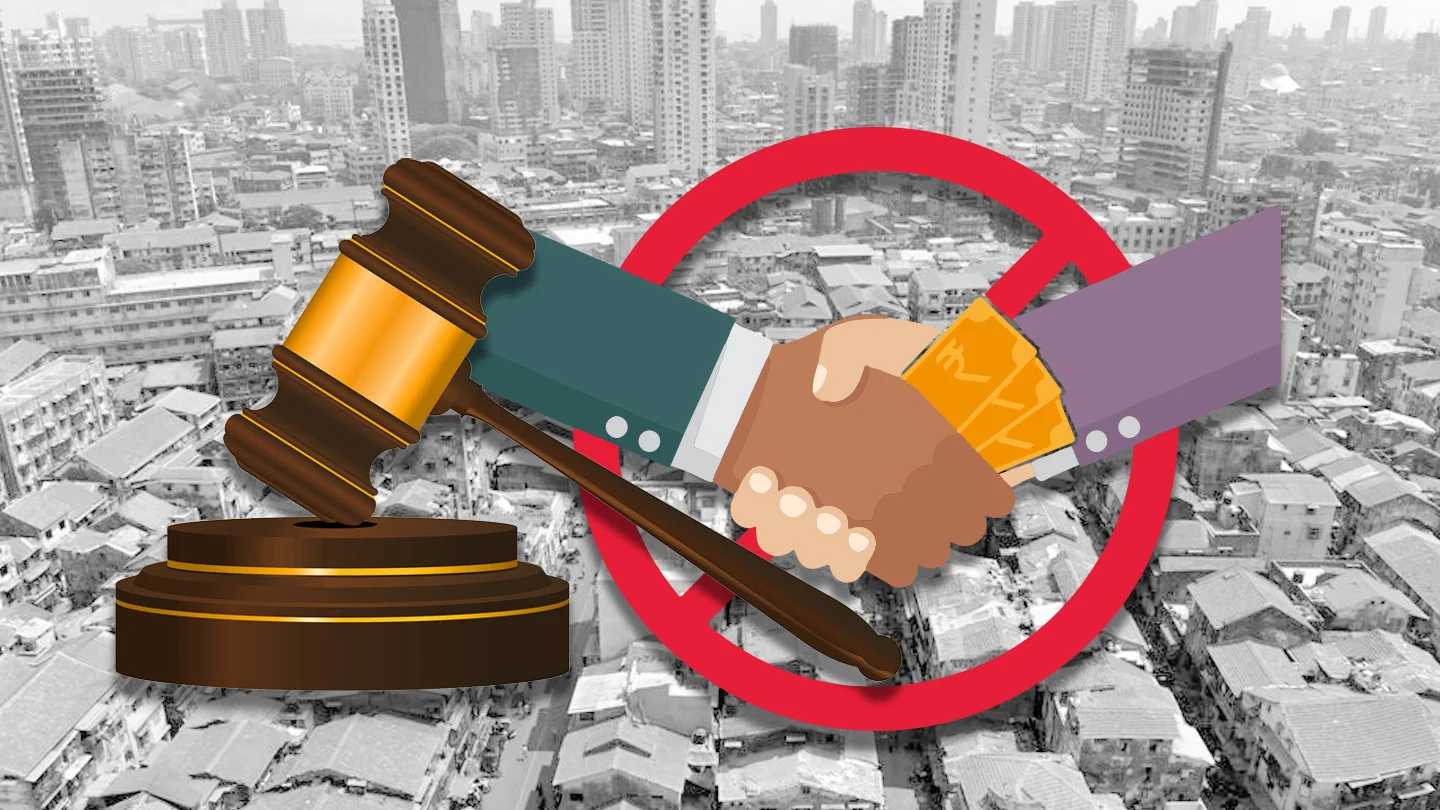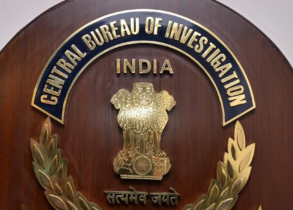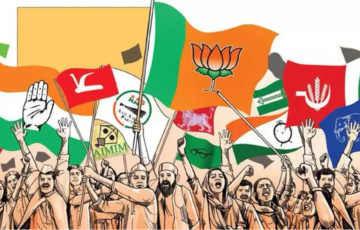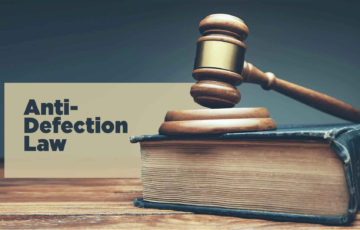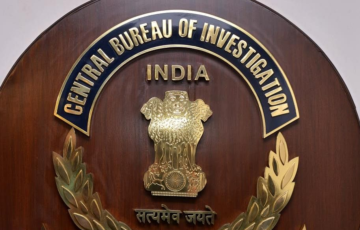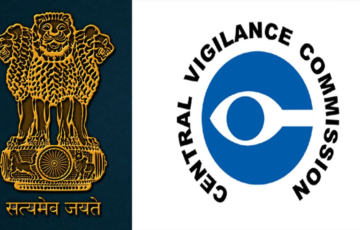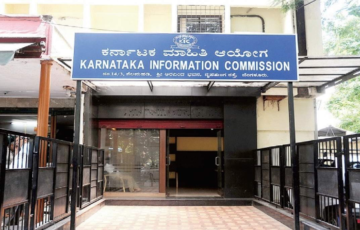LOKPAL AND LOKAYUKTAS
Background
- The history of Lokpal and Lokayukta in India is rooted in the global concept of ombudsman institutions. The idea of an ombudsman can be traced back to Sweden in 1809, and it gained prominence after World War II. In India, the concept of a constitutional Ombudsman was first proposed by Ashok Kumar Sen, the former law minister, in the early 1960s.
- The term “Lokpal” was coined by L.M. Singvi in 1963, derived from the Sanskrit word that means “protector of the people.” However, despite multiple attempts, the Lokpal Bill was introduced in Parliament eight times but was never passed until the Lokpal and Lokayuktas Act, 2013, which established the Lokpal at the national level.
- In 1971, Maharashtra became the first Indian state to establish a Lokayukta, a state-level anti-corruption ombudsman, to oversee corruption in various agencies.
- India’s commitment to combating corruption is also reflected in its signing of the United Nations Convention Against Corruption. The establishment of the Lokpal body, as well as other anti-corruption legislation, demonstrates the government’s dedication to providing clean and responsive governance and addressing issues related to corruption.
| Evolution of Lokpal and Lokayuktas |
The establishment of Lokpal and Lokayuktas in India has a history marked by various commissions and recommendations:
|
Lokpal and Lokayuktas Act (2013)
The Lokpal and Lokayuktas Act (2013) in India has several key features:
- Uniform Vigilance and Anti-Corruption Framework: It establishes the institution of the Lokpal at the national level and the Lokayukta at the state level, providing a consistent framework for anti-corruption efforts throughout the country.
- Jurisdiction: The Lokpal’s jurisdiction covers the Prime Minister, Ministers, Members of Parliament, and various government officers and officials at the central level.
- Composition of Lokpal: The Lokpal consists of a Chairperson and members, with at least 50% of the members being judicial members.
- Inclusivity: At least 50% of the members of the Lokpal come from marginalized groups, including Scheduled Castes (SCs), Scheduled Tribes (STs), Other Backward Classes (OBCs), minorities, and women.
- Selection Process: The Chairperson and members are selected by a committee that includes the Prime Minister, the Speaker of the Lok Sabha, the Leader of the Opposition in the Lok Sabha, the Chief Justice of India, or a nominated Supreme Court Judge, and an eminent jurist nominated by the President.
- Search Committee: A Search Committee assists the Selection Committee in the selection process, with at least 50% of its members being from marginalized groups.
- Prime Minister Inclusion: The Prime Minister is brought under the purview of the Lokpal, with specific procedures for handling complaints against the Prime Minister.
- Jurisdiction over Public Servants: The Lokpal’s jurisdiction covers all categories of public servants, from Group A to Group D officers and employees of the government.
- Supervision of Investigating Agencies: The Lokpal has the authority to supervise and direct investigating agencies, including the Central Bureau of Investigation (CBI), for cases referred to them.
- Director of CBI Selection: A High-Powered Committee chaired by the Prime Minister recommends the selection of the Director of the CBI.
- Attachment and Confiscation of Property: The Act allows for the attachment and confiscation of property acquired through corrupt means, even while a prosecution is pending.
- Clear Timelines: The Act sets clear timelines for preliminary inquiries, investigations, and trials, and provisions for the establishment of special courts.
- Enhanced Punishments: Maximum punishments under the Prevention of Corruption Act are increased from seven years to ten years, with minimum punishments for various offenses.
- Coverage of Institutions: Institutions fully or partly financed by the government fall under the jurisdiction of the Lokpal, but those aided by the government are excluded.
- Protection for Honest Public Servants: The Act provides protection for honest and upright public servants.
- Prosecution Sanction: The Lokpal can grant sanctions for the prosecution of public servants, replacing the need for government or competent authority approval.
- Strengthening the CBI: Several provisions aimed at strengthening the Central Bureau of Investigation (CBI) are included, such as a Directorate of Prosecution and a panel of advocates for handling Lokpal-referred cases.
- Foreign Contributions: Entities receiving donations from foreign sources exceeding ₹10 lakhs per year under the Foreign Contribution Regulation Act (FCRA) are brought under Lokpal’s jurisdiction.
- Lokayukta Establishment: The Act mandates the establishment of Lokayuktas at the state level within a specified timeframe, granting states the freedom to determine the structure of their Lokayukta mechanism.
| Drawbacks of the Act |
The Lokpal and Lokayuktas Act (2013) has several drawbacks and shortcomings:
|
Composition
Lokpal Composition
- The Lokpal panel consists of a Chairperson and a maximum of eight members.
- Four of these members must be judicial members.
Eligibility for Chairperson of Lokpal
- The Chairperson of the Lokpal must meet one of the following criteria:
- Must have served as the Chief Justice of India.
- Must have been a Supreme Court judge.
- Must be a distinguished individual with special knowledge and expertise in areas such as anti-corruption policy, public administration, vigilance, finance, law, and management for at least twenty-five years.
Eligibility for Lokpal Judicial Member
- An applicant for the position of a judicial member of the Lokpal must have served as a judge on the Supreme Court or as the Chief Justice of a High Court.
Eligibility for Other Lokpal Members
- Other members of the Lokpal should be eminent individuals with at least twenty-five years of specific knowledge and competence in areas related to anti-corruption policy, public administration, vigilance, finance, law, and management.
Inclusivity Requirement
- At least half of the Lokpal members must come from Scheduled Castes (SCs), Scheduled Tribes (STs), Other Backward Classes (OBCs), minorities, or women, to ensure inclusivity and diversity in the composition of the Lokpal.
Lokayukta Composition
- The Lokayukta, at the state level, is typically a former Chief Justice of the High Court or a former Supreme Court judge.
These eligibility criteria are established to ensure that members of the Lokpal and Lokayuktas possess the necessary qualifications, experience, and expertise to effectively address issues related to corruption and maladministration in India. The emphasis on inclusivity aims to promote diversity and representation among the members.
Selection Committee
| Position | Lokpal Selection Committee | Lokayukta Selection Committee |
| Chairperson (Lokpal) | Prime Minister | Chief Minister |
| Member (Speaker of Lok Sabha) | Speaker of Lok Sabha | Consulted with High Court Chief Justice |
| Member (Leader of Opposition in Lok Sabha) | Leader of Opposition in Lok Sabha | Consulted with Speaker of Legislative Assembly |
| Member (Chief Justice of India or nominated Judge) | Chief Justice of India or nominated Judge | Consulted with Chairman of Legislative Council |
| Member (Eminent Jurist) | Eminent Jurist | Consulted with Leader of Opposition in both Houses of State Legislature |
| Appointment by (Lokpal) | President on the recommendation of the Selection Committee | N/A |
| Appointment by (Lokayukta) | N/A | Governor |
Note: – Once appointed, Lokpal and Lokayukta cannot be dismissed nor transferred by the government, and can only be removed by passing an impeachment motion.
Term of Office:
- Members of Lokpal and Lokayukta are appointed by the President of India.
- They serve a term of five years from the date of their appointment or until they reach the age of 70, whichever comes earlier.
Salary and Allowances:
- The Chairperson of Lokpal is entitled to a salary, allowances, and working conditions that are similar to those of the Chief Justice of India.
- Members of Lokpal receive salaries, allowances, and working conditions that are comparable to those of a Supreme Court Judge.
Lokayuktas
- Lokayuktas are anti-corruption ombudsman institutions at the state level in India.
- Establishment: States in India are mandated to set up Lokayuktas to address charges of corruption and maladministration against their own officials.
- Jurisdiction: Lokayuktas have jurisdiction over all state government personnel, which includes officers and employees of the state government, religious institutions, as well as high-ranking officials such as the governor, ministers, and Members of the Legislative Assembly (MLAs).
- Pre-Lokpal and Lokayukta Act of 2013: Before the enactment of the Lokpal and Lokayukta Act in 2013, many states had already established Lokayuktas as statutory bodies with a specific tenure.
- Direct Approach by the Public: Members of the public can directly approach the Lokayukta with allegations of corruption, nepotism, or any other form of maladministration. This allows for more accessible means of reporting corruption at the state level.
- Implementation Across States: The Lokayukta institution was already in place in many states prior to the national Lokpal and Lokayukta Act. However, after the enactment of the national law, states were required to appoint a Lokayukta within a year of its taking effect. As of now, Lokayuktas have been constituted in only 17 states.
Function of Lokpal and Lokayukta
- The Lokpal and Lokayukta have specific functions and jurisdiction in India, with the primary goal of investigating and addressing cases of corruption and maladministration.
Lokpal
- Investigation
- Eligible to investigate current and former Prime Ministers, Union Ministers, Members of Parliament, and officers of the Union Government in Groups A, B, C, and D.
- Cannot investigate allegations against the Prime Minister related to foreign relations, external and internal security, public order, atomic energy, or space without specific conditions being met.
- Requires the recommendation of at least two-thirds of the Lokpal members to investigate allegations against the Prime Minister.
- Secrecy: Investigations into the Prime Minister must be conducted in secret. If a complaint is rejected, the investigation’s documents are not made public.
- Applicability: Extends to chairpersons, members, executives, and directors of entities created by an Act of Parliament and supported by the Union or State governments. Applies to societies, trusts, or organizations receiving foreign gifts exceeding ten lakh rupees.
- Preliminary Inquiry: The Inquiry Wing or another designated body must complete a preliminary investigation within 60 days and submit a report to the Lokpal. Feedback is obtained from both the public servant and the “competent authority” before presenting the report.
- Transfer or Suspension: Can recommend the transfer or suspension of a public official accused of corruption.
- Prevention of Record Destruction: Can issue orders to prevent the destruction of records during preliminary investigations.
- Search and Seizure: Empowered with the authority of search and seizure, and can take measures to combat corruption, including the attachment of assets.
- Supervision and Instruction: Has the authority to supervise and instruct central investigating agencies, including the Central Bureau of Investigation (CBI), for cases referred to them.
Lokayukta
- The functions and jurisdiction of Lokayuktas at the state level are generally similar, but they focus on state government officials, including the governor, ministers, MLAs, and state government personnel. Lokayuktas investigate charges of corruption and maladministration at the state level.
- These institutions play a crucial role in addressing corruption and promoting accountability in government at both the central and state levels in India.
Necessity of Lokpal and Lokayuktas
- Maladministration and Corruption: Maladministration, often caused by corruption, undermines the foundations of a nation’s governance and hinders the effective functioning of administrative bodies. It erodes public trust, misallocates resources, and impedes progress.
- Independence of Anti-Corruption Organizations: Many anti-corruption organizations face challenges in maintaining true independence. The perception of influence from political authorities can erode their credibility and effectiveness. This issue is not unique to India, and various countries struggle with ensuring the autonomy of such organizations.
- Advisory Role and Limited Authority: Several anti-corruption organizations primarily serve in advisory roles and lack real authority to enforce their recommendations. As a result, their advice may not always lead to concrete action against corruption.
- Internal Accountability and Transparency: Ensuring internal accountability and transparency within these organizations is crucial. Without effective mechanisms for oversight and accountability, there can be a lack of trust in their operations.
- Accountability of Anti-Corruption Bodies: Holding anti-corruption institutions accountable is essential to maintain their credibility and effectiveness. Establishing clear and efficient mechanisms for oversight can help ensure they are fulfilling their mandate.
- Role of Lokpal and Lokayukta: The creation of independent Lokpal and Lokayukta institutions in India represents a significant step in combating corruption. These bodies are intended to provide a defense against the persistence of corruption by investigating allegations, promoting transparency, and holding public officials accountable.
Limitations of Lokpal and Lokayuktas
- Selection Process Ambiguity: The lack of clear guidelines for determining who qualifies as an “eminent jurist” or a “person of integrity” in the Lokpal selection process can lead to subjectivity and potential biases in appointments.
- Lack of Appeal Procedures: The absence of well-defined procedures for appealing Lokpal’s actions can undermine transparency and fairness, as individuals may have no recourse if they believe they have been treated unfairly.
- Seven-Year Limitation Period: The requirement that no complaint against corruption can be filed until seven years have passed from the date of the alleged offense might restrict the investigation of older cases of corruption, potentially allowing wrongdoers to escape accountability.
- Influence in Appointing Committee: The presence of political party representatives in the appointing committee for Lokpal raises concerns about potential political interference in the selection process.
- Delayed Appointments: The fact that no Lokpal has been appointed despite the passage of the Lokpal and Lokayuktas Act in 2013 indicates a lack of political will and administrative hurdles in implementing the law.
- Exclusion of the Judiciary: The omission of the judiciary from the Lokpal’s purview is seen as a significant limitation, as it leaves a crucial branch of government outside the scope of anti-corruption oversight.
- Legal Basis and Contestation: The Lokpal’s rulings lack a clear legal basis, and there are limited mechanisms for contesting its decisions. This can create uncertainty and questions about the legitimacy of its actions.
- To enhance the effectiveness of the Lokpal and Lokayukta in fighting corruption, key steps include providing them with functional autonomy, ensuring workforce availability, addressing the root causes of corruption, and maintaining transparency in appointments. Public awareness and participation, a robust legal framework, and political commitment are also essential for the success of these institutions.

